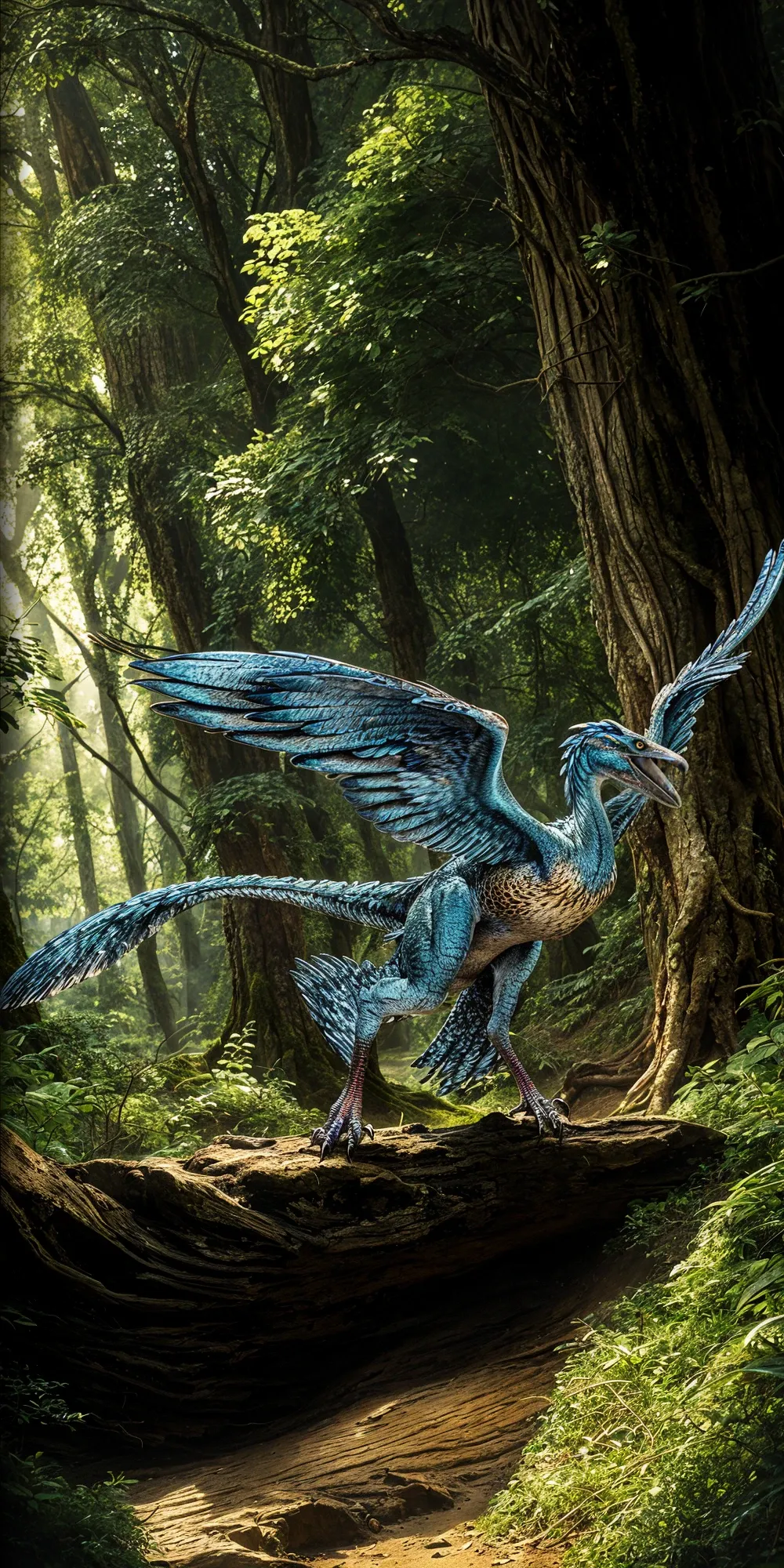The Microraptor
The Microraptor, known for its feathered wings, lived during the Early Cretaceous period and was a small, bird-like dinosaur with four wings. It had long feathers on its legs like those of a bird, and its wings combined both flight and climbing abilities. Microraptor had sharp teeth, a long tail for balance, and a sleek, lightweight body suited for aerial acrobatics.

| Microraptor | |
|---|---|
| Size | 1-2 feet (30-60 cm) |
| Weight | 2-4 lbs (1-2 kg) |
| Speed | Up to 30 mph (48 km/h) |
| Key Strength | Speed and agility |
| Biggest Weakness | Size |
| Scientific Name | Microraptor |
| Family | Dromaeosauridae |
| Habitat | Forests |
| Geography | China |
| Diet | Carnivorous |
| Lifespan | 3 years - 6 years |

The Microraptor
The Microraptor, known for its feathered wings, lived during the Early Cretaceous period and was a small, bird-like dinosaur with four wings. It had long feathers on its legs like those of a bird, and its wings combined both flight and climbing abilities. Microraptor had sharp teeth, a long tail for balance, and a sleek, lightweight body suited for aerial acrobatics.
Fun Fact: Microraptor had iridescent black feathers that shimmered like those of a crow or raven.
| Microraptor | |
|---|---|
| Size | 1-2 feet (30-60 cm) |
| Weight | 2-4 lbs (1-2 kg) |
| Speed | Up to 30 mph (48 km/h) |
| Key Strength | Speed and agility |
| Biggest Weakness | Size |
| Scientific Name | Microraptor |
| Family | Dromaeosauridae |
| Habitat | Forests |
| Geography | China |
| Diet | Carnivorous |
| Lifespan | 3 years - 6 years |
Microraptor Matchups
We use AI to simulate matchups between the Microraptor and other animals. Our simulation considers size, strength, and natural predatory behaviors to determine the most likely outcome.

Can't find the Matchup you want?
Create Your Own MatchupMicroraptor: Diet, Predators, Aggression, and Defensive Behaviors
What did Microraptors eat?
Microraptors were believed to have been carnivorous, feeding on small animals such as insects, amphibians, and possibly small mammals. Their sharp teeth and claws were likely adapted for catching and consuming prey.
Did Microraptors have any predators?
As small dinosaurs themselves, Microraptors may have been preyed upon by larger predators such as other raptors, small theropods, or possibly even some small dromaeosaurids. Their small size and agile nature would have made them vulnerable to predation.
Were Microraptors aggressive?
While there was limited evidence to suggest the behavior of Microraptors, their sharp teeth and claws indicated that they were likely predators that had to be aggressive to catch their prey. However, they may have also displayed social behaviors within their own species for mating or territorial purposes.
Did Microraptors fight?
Microraptors likely engaged in intra-specific competition, especially during feeding or mating situations. This could have involved physical confrontations such as biting, clawing, or wing flapping to establish dominance or defend their territory.
How did Microraptors defend themselves?
Microraptors may have used their agility and speed to evade predators, as well as their sharp claws and teeth to fight back if necessary. They may have also relied on their feathered wings for balance and maneuverability in escape scenarios.
What was Microraptors' biggest weakness in a fight?
One of the main weaknesses of Microraptors in a fight would have been their small size and relatively fragile build compared to larger predators. They would have been easily overpowered by larger dinosaurs or struggled to defend themselves against multiple attackers due to their diminutive stature.
Fun Fact: Despite having wings, Microraptor was likely not capable of sustained powered flight but rather glided from tree to tree.
Fun Fact: Microraptor was one of the first non-avian dinosaurs discovered with evidence of feathers, providing crucial insights into the evolution of flight in dinosaurs.











